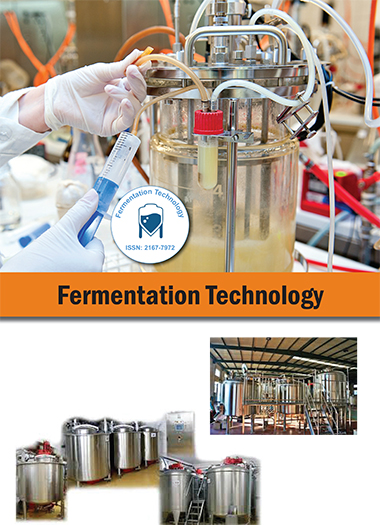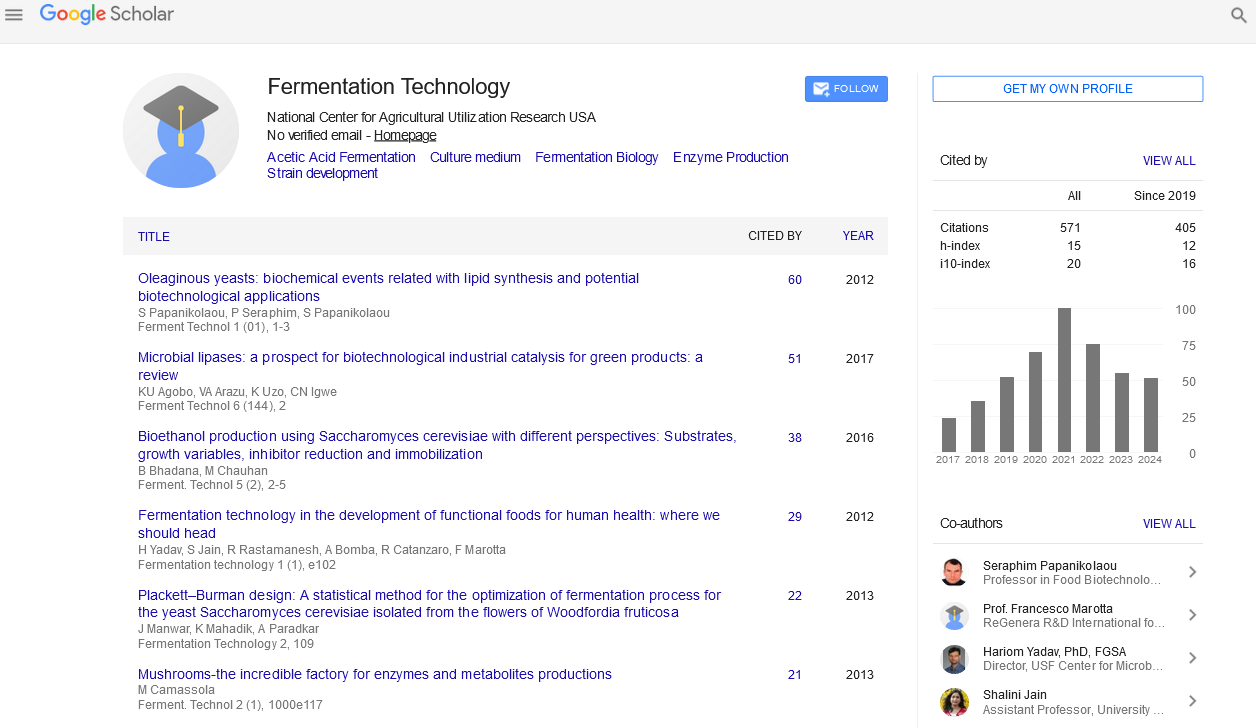Indexed In
- Open J Gate
- Genamics JournalSeek
- Access to Global Online Research in Agriculture (AGORA)
- RefSeek
- Hamdard University
- EBSCO A-Z
- OCLC- WorldCat
- Publons
Useful Links
Share This Page
Journal Flyer

Open Access Journals
- Agri and Aquaculture
- Biochemistry
- Bioinformatics & Systems Biology
- Business & Management
- Chemistry
- Clinical Sciences
- Engineering
- Food & Nutrition
- General Science
- Genetics & Molecular Biology
- Immunology & Microbiology
- Medical Sciences
- Neuroscience & Psychology
- Nursing & Health Care
- Pharmaceutical Sciences
Steroid C25 dehydrogenase - a novel catalyst for regioselective hydroxylation of cholesterol and its derivatives
World Congress on Beneficial Microbes: Food, Pharma, Aqua & Beverages Industry
August 25-27, 2015 Valencia, Spain
Maciej Szaleniec, Agnieszka Dudzik, Ewa Niedzialkowska, Agnieszka Rugor, Mateusz Tataruch and Marcin Wasylewski
Polish Academy of Sciences, Poland
Scientific Tracks Abstracts: Ferment Technol
Abstract:
Sterolibacterium denitrificans is a denitrifying bacterium that under anaerobic conditions mineralizes cholesterol [1]. It is a source of new region-selective enzymes that can be consider as an interesting biocatalysts for the industry. The initial degradation step of choresterol, ring A oxidation and isomerisation to cholest-4-en-3-one, is catalyzed by cholesterol dehydrogenase/isomerase (AcmA). This product is further oxidized to cholesta-1,4-dien-3-one by cholest-4-en-3-one-��1- dehydrogenase (AcmB) [2]. Subsequently, both products are hydroxylated at tertiary C25 of the alkyl side chain by steroid C25 dehydrogenase (S25DH) using water as an oxygen donor. S25DH is a heterotrimer (�±�²�³), containing a molybdopterin guanine dinucleotide cofactor (MGD), 5 FeS clusters and a heme belonging to EBDH-like family [3]. The hydroxylation of cholesterol and its derivatives with S25DH provides an opportunities for application of the enzyme in synthesis of signal compounds and hormones such as 25-hydroxycholesterol and vitamin D3 derivatives. Homogenous and immobilized S25DH was used to convert range of substrates (e.g. cholest-4-en-3-one, cholest-1,4-dien- 3-one, cholest-4,6-dien-3-one) under optimized reaction conditions. As the crystal structure of the enzyme is still unknown a homology model of �± catalytic subunit S25DH was constructed. MD simulations and docking experiments followed by QM:MM studies provided insight into S25DH catalytic characteristics, which is a first step in understanding of the catalytic mechanism. 1. Dermer, J., and Fuchs, G. J. Biol. Chem.. 2012, 287, 36905â��36916 2. Chiang, et al. J. Bacteriology 2008, 190, 905-914. 3. M. Szaleniec, et. al., Biochemistry 2007, 46 (2007) 7637-7646
Biography :
Maciej Szaleniec has completed his PhD at Institute of Catalysis and Surface Chemistry, PAS in 2007 and is currently the head of Joint Laboratory of Biotechnology and Enzyme Catalysis, ISCS PAS in Kraków, Poland. He has published more than 30 papers in reputed journals and is focused in his research on both experimental and theoretical studies of enzymes from anaerobic bacteria.
Email: ncszalen@cyfronet.pl

